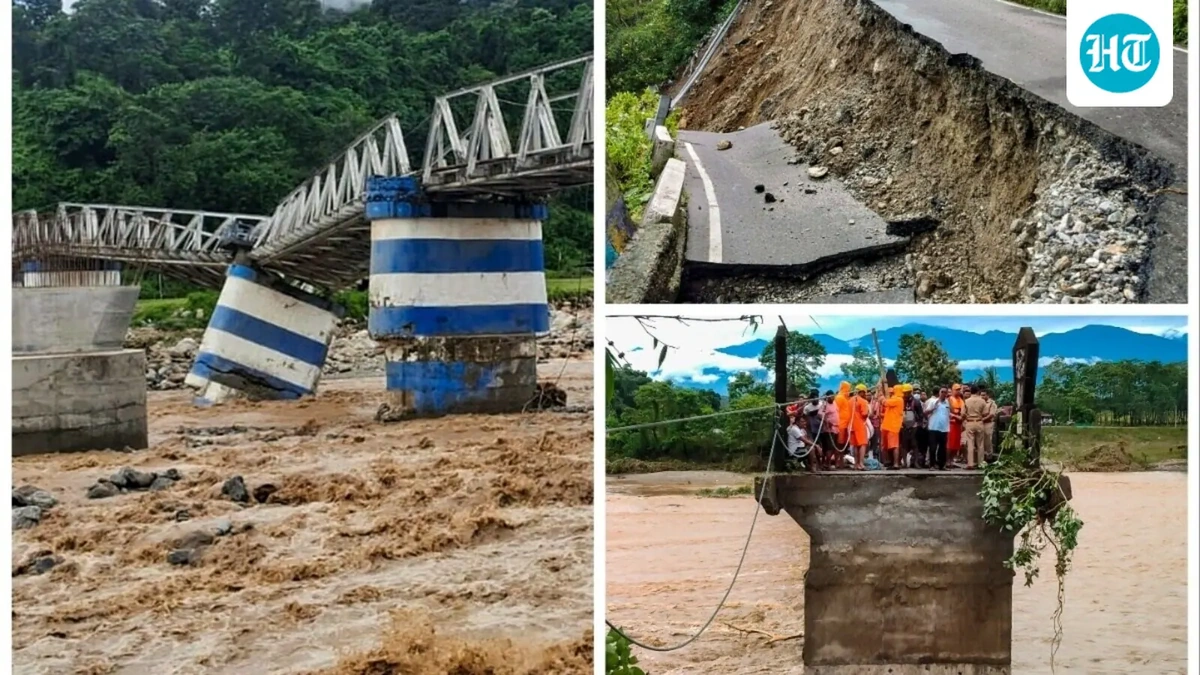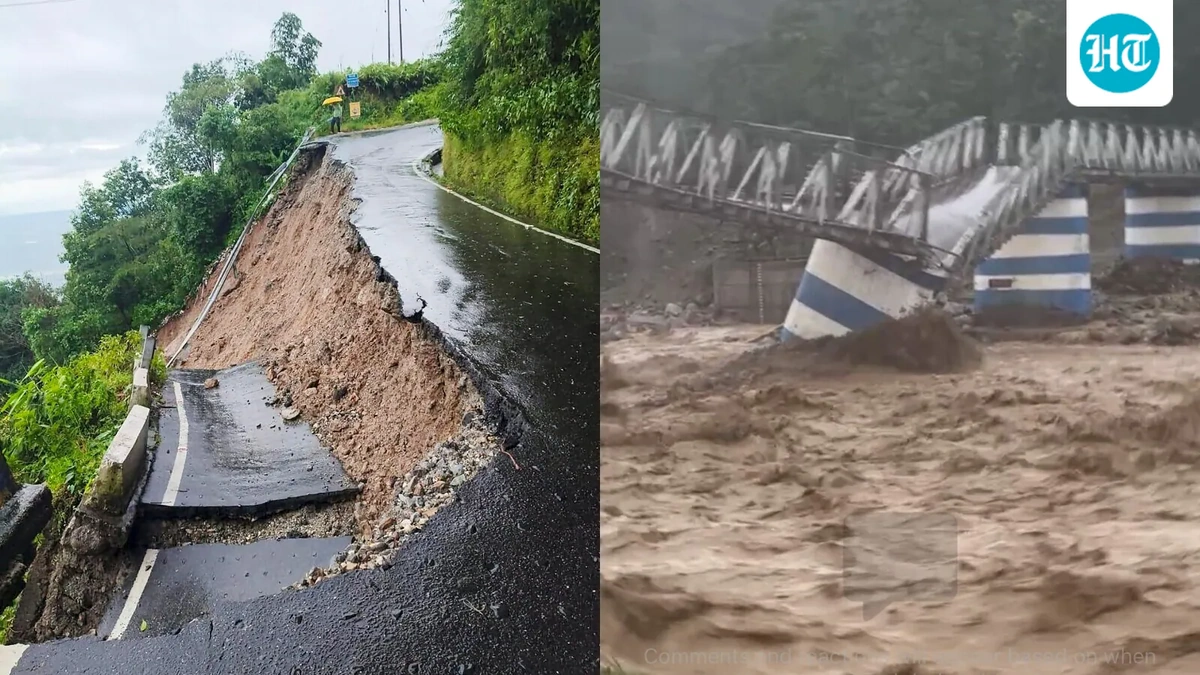Darjeeling Landslides | Environmentalists Cite Unplanned Urbanization as Cause of ‘Man-Made Disaster’
The hills of Darjeeling, once a haven of tranquility and natural beauty, are now bearing the brunt of a recurring nightmare: Darjeeling landslides . Every year, during the monsoon season, news reports flood in, detailing the devastation and loss of life. But here’s the thing – these aren’t just natural disasters. Environmentalists are increasingly pointing fingers at unplanned urbanization, labeling these tragedies as ‘man-made disasters’. So, what’s really going on, and why should we in India be paying attention?
The Unfolding Tragedy | A Closer Look at the Darjeeling Landslide Crisis

Let’s be honest, the news cycle moves fast. One day it’s about the elections, the next it’s about the stock market. But the Darjeeling landslides are not a fleeting headline. They are a symptom of a deeper malaise. We need to understand the causes of landslides in this specific region. It’s not just about heavy rainfall; it’s about how we, as a society, are interacting with the environment.
According to a report by the Geological Survey of India (https://www.gsi.gov.in/), the instability of the slopes is exacerbated by rampant construction. Think about it: buildings, roads, and infrastructure are being built without proper environmental impact assessments. Forests are being cleared, weakening the soil’s ability to hold water. The result? Disasters waiting to happen. A common mistake I see is the assumption that just because a plot of land is available, it’s suitable for construction. That’s a dangerous assumption in a fragile ecosystem like Darjeeling.
Unplanned Urbanization | The Villain of the Piece?
What fascinates me is the sheer scale of unplanned urbanization in Darjeeling. It’s not just about a few houses here and there; it’s about entire towns expanding without any regard for sustainable development. The pressure on land resources is immense. The demand for housing and tourism infrastructure is driving construction activity in the most vulnerable areas. Land use regulations are either weak or poorly enforced, leading to unchecked development.
And here’s why this matters: when you build on unstable slopes, you’re essentially playing a game of geological Russian roulette. Every monsoon season becomes a test of fate. And as climate change intensifies, with more erratic and intense rainfall, the risks only increase. We also must consider the impacts of climate change . Cuttack News provides further insights on this topic. So, we must ask: are we building a future or just building a bigger disaster?
Environmentalists’ Warnings | A Cry for Sustainable Solutions
Environmental activists and experts have been warning about this for years. They’ve been highlighting the need for sustainable urban planning, stricter enforcement of environmental regulations, and community involvement in disaster preparedness. But are these voices being heard? Are the authorities taking these warnings seriously?
Let me rephrase that for clarity: It’s not enough to just pay lip service to environmental concerns. We need concrete action. We need policies that prioritize environmental protection over short-term economic gains. We need to invest in research to understand the specific vulnerabilities of the region. And, most importantly, we need to empower local communities to participate in decision-making processes.
As per the West Bengal State Disaster Management Authority, community participation is crucial for disaster preparedness . They emphasize the importance of local knowledge in identifying vulnerable areas and developing effective response strategies. The one thing you absolutely must advocate for is involving local communities. Their insights are invaluable.
The Way Forward | A Path to Resilience
So, what can be done? How can we prevent future Darjeeling landslide tragedies ? Here are a few thoughts:
- Sustainable Urban Planning: Implement strict land use regulations that restrict construction in vulnerable areas. Promote green building practices and prioritize the preservation of forests and green spaces.
- Strengthen Infrastructure: Invest in infrastructure projects that are designed to withstand the impacts of climate change and natural disasters. Improve drainage systems, stabilize slopes, and build retaining walls.
- Community Involvement: Empower local communities to participate in disaster preparedness and response efforts. Provide training on early warning systems, evacuation procedures, and first aid.
- Awareness Campaigns: Launch public awareness campaigns to educate residents about the risks of landslides and the importance of sustainable practices.
Also, let’s not forget soil erosion as a critical factor in slope instability. Effective soil conservation measures are vital to protect the land. The link to Leh Ladakh will help you see how this is playing out there too.
I initially thought this was straightforward, but then I realized that simply proposing solutions isn’t enough. We need a fundamental shift in mindset. We need to recognize that environmental protection is not a luxury; it is a necessity. It is essential for the well-being of current and future generations. It’s not an easy fix, but the alternative – continuing down the current path – is simply unacceptable.
FAQ Section | Addressing Your Concerns About Landslides in Hilly Regions
Frequently Asked Questions
What are the primary causes of landslides in hilly regions like Darjeeling?
The primary causes include heavy rainfall, deforestation, unplanned construction, and seismic activity. These factors weaken the soil structure, making it prone to slippage.
How does unplanned urbanization contribute to landslides?
Unplanned urbanization leads to deforestation, slope cutting, and increased pressure on land resources. This destabilizes the slopes and increases the risk of landslides.
What can individuals do to prevent landslides?
Individuals can plant trees, avoid building on steep slopes, maintain proper drainage systems, and support sustainable development practices.
What role does the government play in landslide management?
The government plays a crucial role in implementing land use regulations, investing in infrastructure, conducting risk assessments, and promoting community awareness.
What are some effective measures for disaster preparedness?
Effective measures include early warning systems, evacuation plans, community training, and stockpiling essential supplies.
How can climate change affect landslide frequency and intensity?
Climate change can lead to more intense rainfall and extreme weather events, increasing the frequency and intensity of landslides.
Ultimately, the future of Darjeeling hinges on our ability to learn from past mistakes and embrace a more sustainable approach to development. It’s not just about preventing landslides; it’s about creating a future where both people and nature can thrive.













